Email marketing is a game-changer for affiliate marketers. It’s your direct line to potential consumers, allowing you to promote products authentically and engage personally.
Understanding how email marketing fits into the broader affiliate ecosystem is key. This isn’t just about blasting out messages—it’s about fostering meaningful connections, maintaining transparency, and building trust over time.
![]()
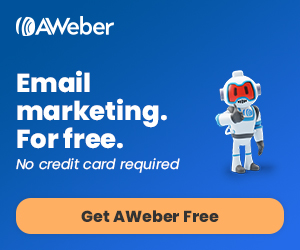 Choosing the Right Email Marketing Platform
Choosing the Right Email Marketing Platform
The first step is picking an email marketing platform that fits your needs.
Think about the size of your list, the kind of automation you’ll need, and any specific features that can help tailor your message.
AWeber is the one I use because they provide free email marketing templates, their automation is above average, and they have the best record for deliverability, meaning your emails won’t go to spam folders.
They also offer super fast customer service and lots of tutorials to help you learn stuff quickly. You can start using AWeber for free to try it out. You can read my full review of AWeber here.
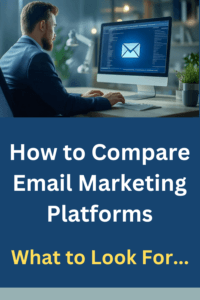 Compare Email Marketing Platforms
Compare Email Marketing Platforms
I personally don’t have experience with any other platforms because AWeber was recommended to me by Wealthy Affiliate, the company who taught me how to do affiliate marketing.
I’ve always trusted their recommendation and have never looked elsewhere for another email marketing software.
Other email marketing platforms include Mailchimp, Constant Contact and ConvertKit. I suggest reading this post from brevo.com where they compare the 11 Best Email Marketing Services if you’d like to check into several platforms.
When choosing an email marketing platform, look for essential tools and resources like automation, advanced scheduling, tracking open and click rates, and platforms that integrate seamlessly with other platforms like your social media.
These tools will be your co-pilot, helping you tweak strategies based on real-time feedback.
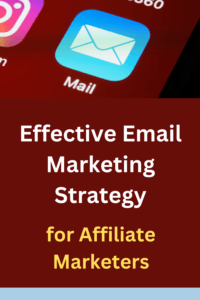 Developing an Effective Email Marketing Strategy
Developing an Effective Email Marketing Strategy
A stellar email marketing strategy is your roadmap to success. Define your audience, set clear goals, and plan your content calendar.
Think of it like plotting a course before a big journey—where do you want to go, and what results do you want to achieve along the way?
Remember, each email should have a purpose, whether it’s to educate, engage, or directly sell.
For step-by-step, expert email marketing training from Wealthy Affiliate, check out this 5-part training series called, Email Marketing for Beginners. You can access this course and hundreds of others free with their 14-day free trial.
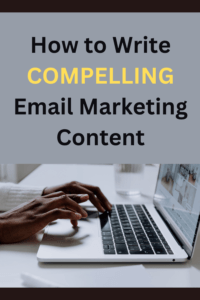 Crafting Compelling Content: Connecting with Your Audience
Crafting Compelling Content: Connecting with Your Audience
Getting someone to open an email could feel like winning the lottery, and the secret often lies in the subject line.
The key here is to get their attention without sounding too much like a sales pitch.
Think of it as your first impression—it needs to spark curiosity or offer value right away.
Once you’ve captured their attention, it’s important to make sure they feel like the message is just for them.
Use personal insights and friendly language to turn that generic email into a conversation tailored just for them. People love feeling special, so let ’em know you get them!
Beyond the words, visuals play a major role too. You don’t have to be Picasso, but clear, attractive design can make a big difference. The emails should be easy on the eyes—tidy, simple, and most importantly, mobile-friendly.
 Everyone is on their phones nowadays, so make sure your emails look great anytime, anywhere.
Everyone is on their phones nowadays, so make sure your emails look great anytime, anywhere.
Offering value is what will keep your email subscribers coming back for more. Mix it up with interesting content like how-to’s, product reviews, or exclusive offers.
Share little nuggets of gold that they won’t find elsewhere, making them excited for every email you send. It’s not just about the sell; it’s about building a loyal community.
Check out this expert training on how to create content.
 Free Email Marketing Course
Free Email Marketing Course
AWeber offers a free email marketing course called, What to Write in Your Email. It includes 45+ free email templates and step-by-step instructions how to write super effective, engaging emails.
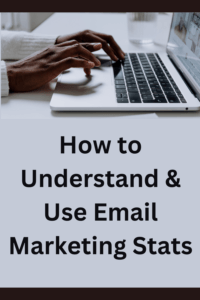 Analyzing and Refining: Maximizing Your Results
Analyzing and Refining: Maximizing Your Results
Numbers and stats might not be everyone’s cup of tea, but they’re a big part of leveling up your email marketing game.
Keeping an eye on metrics like open rates, click-through rates, and conversions will give you a clear picture of what’s working and what’s not.
Treat this data as feedback from your audience, guiding your next move.
A/B testing isn’t just for science fairs—it’s your best buddy in tweaking emails for better performance. Maybe you test different subject lines or call-to-action buttons.
Even small changes can lead to significant improvements, and those little experiments let you discover what your audience really responds to.
Segmentation takes it up a notch by allowing you to send targeted messages to specific groups within your email list.
You could segment based on interests, purchase history, or even how they’ve interacted with past emails. Tailored content means higher engagement and happier subscribers.
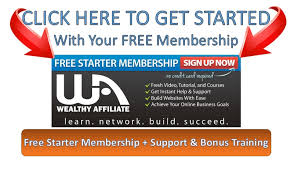 But listen to me: Don’t spend all your time all wrapped up in email marketing for your business. In my opinion, you should definitely do email marketing. It’s priceless and definitely worth it.
But listen to me: Don’t spend all your time all wrapped up in email marketing for your business. In my opinion, you should definitely do email marketing. It’s priceless and definitely worth it.
Just make sure you’re spending most of your time doing what’s most important to your particular business. For me, that’s creating and publishing new, valuable, useful content.
Don’t make a career out of the email marketing portion of your business. Unless it’s uniquely important to the success of your particular online business.
 Don’t Worry if People Unsubscribe from Your Email List
Don’t Worry if People Unsubscribe from Your Email List
First, you don’t want to be paying for a subscriber that isn’t interested in your content. Nobody likes seeing people unsubscribe, but it’s a reality.
Instead of feeling bummed out when numbers drop, see it as a chance to improve subscriber retention.
Ask for feedback—understanding why they’re leaving can help you refine your approach. Plus, it keeps your list fresh with folks who truly want to be there.
I personally clean out my email list monthly. Every month, I create a report of subscribers who have been subscribed for at least 6 months, but have not opened an email from me in 6 months.
To me, that’s a clear indicator that I’m paying for subscribers who aren’t interested in my content. I delete those monthly.
How to Do Email Marketing for Affiliate Marketing
For more email marketing tips for affiliate marketers, read this post from flodesk.com, How to Launch an Affiliate Email Marketing Campaign.
 I Hope This Helped!
I Hope This Helped!
Thank you for visiting my website! I’ve been using email marketing as part of my affiliate marketing business for almost 10 years now.
My favorite part is that I’ll always have an email list of people, interested in my content, that I own.
So no matter what ever happens with Google, Bing, Yahoo, Pinterest or any other source of traffic for my website, I’ll always have that audience to promote to.
I also love that with AWeber, my email marketing is fully automated. It’s so nice to “set it and forget it” and let it run automatically.
Please feel free to comment below this post if you have any questions about email marketing or about affiliate marketing. I’m happy to help if I can! Debra





Interesting article! This article provides a practical roadmap for affiliate marketers looking to boost their income through email marketing. It explains how selecting the right platform—like AWeber—can set you up for success with user-friendly templates, automation, and high deliverability. The guide emphasizes building trust by crafting engaging, personalized content, and using strategies like segmentation, A/B testing, and performance tracking to continually refine your approach. It also reminds you to balance your time between email marketing and creating valuable content, so your audience remains genuinely engaged. I will love to,it’s a comprehensive yet straightforward strategy to help you maximize your affiliate earnings through effective email campaigns.